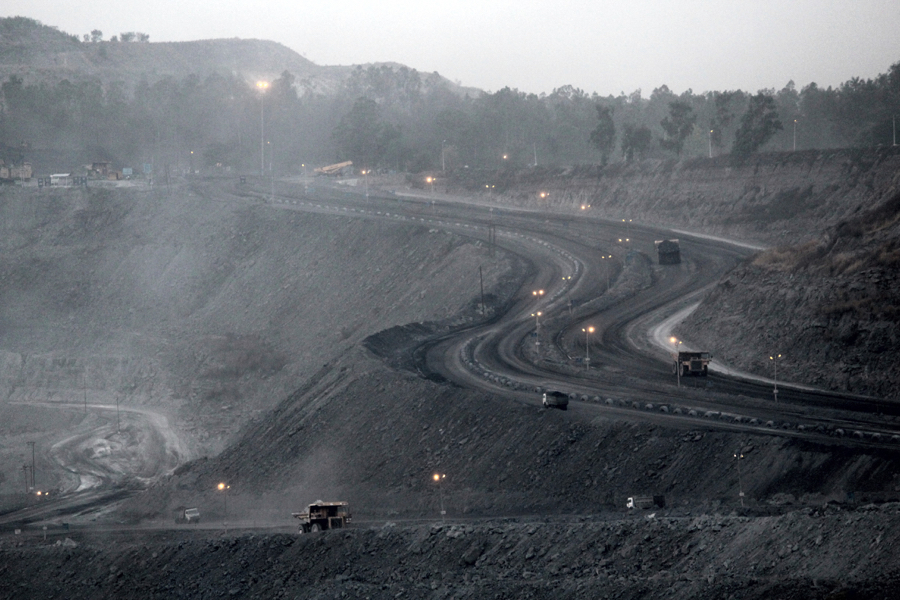Are coal exports to India an opportunity or lost cause?

The Australian government thinks there are opportunities to boost coal exports to India. The Indian government wants to cut imports by half by boosting domestic output. Funny thing is, both could turn out to be correct.
India is already the world’s third-biggest energy consumer and with plans to grow the economy rapidly, it’s likely to move up the ranking in coming years.
However, how the world’s second-most populous nation increases its energy demand is not set in stone, and the country looks to be the petri dish of whether renewable energies such as solar and wind can genuinely replace fossil fuel generation.
No matter what happens with renewable energy in India, coal is going to stay a major part of the generation mix
No matter what happens with renewable energy in India, coal is going to stay a major part of the generation mix, given the country has added 123 gigawatts (GW) of coal capacity in the past decade, taking the total to more than 200 GW.
The rapid build-out of coal generation has led to efforts to boost domestic output, led by state-controlled producer Coal India.
While much of the commentary on Coal India focuses on the company’s routine failure to meet ambitious production targets, this clouds the fact that it has actually been quite successful in boosting its output.
The world’s largest coal mining company has gone from producing 462 million tonnes in the 2009/10 fiscal year to 607 million tonnes in 2018/19.
Coal India only just missed its 610 million tonne target in the last financial year, and its aim for the current 2019/20 year is to reach 660 million tonnes.
This seems like too much of a stretch for one year, but the relevant metric isn’t whether Coal India meets its targets, it’s how close it comes.
The company’s chairman, A.K. Jha, said last week the aim is to ramp up output by 50-55 million tonnes annually for the next three years, which would allow for imports to decline.
Jha told a conference that India’s total domestic output last fiscal year was 730 million tonnes, but consumption was 965 million, with imports of 235 million filling the gap, the Economic Tomes reported on Aug. 26.
“Out of this 115 million tonnes of imports is inevitable since it is coking coal not abundantly available in the country. The rest, around 120 million tonnes, can be replaced by Coal India’s production,” the newspaper quoted Jha as saying.
Jha’s comments dovetail with the Indian government’s aim to reduce coal imports by at least a third by the fiscal year ending March 2024, according to an Aug. 1 Bloomberg report citing people familiar with the plans.
While these plans may, similar to previous goals, be too ambitious, what it does mean is that the government and Coal India are aiming to lower imports, and will likely achieve this eventually.
So where does this leave those coal exporting countries that look to India as a source of demand growth?
Balancing imports
The answer is that they are in a state of uncertainty, having to bet that India fails to achieve its goals to boost domestic coal output, while simultaneously failing to carry out plans to increase the share of renewable energies.
The Australian government’s Office of the Chief Economist released a report on Aug. 23 in which it said the outlook for India’s coal imports was “finely balanced.”
Citing New Delhi’s own forecasts, the report said India’s coal consumption was likely to rise in coming years, but could vary widely, with 2030 demand seen anywhere from 1.15 billion tonnes to 1.75 billion tonnes.
While India’s coking coal demand looks set to remain robust, the problem is the high level of uncertainty over imports of thermal coal
It’s likely that domestic production will suffice if the lower end of that range is the outcome, but if the higher demand scenario is achieved, imports will continue to be needed.
For Australia, which is the world’s second-largest exporter of thermal coal used in power plants behind Indonesia, the report said the opportunity to boost exports to India comes from replacing cargoes from Indonesia and South Africa.
This may be the case if Indonesia and South Africa export less in order to reserve their output for domestic consumption.
Currently Australia supplies about 8.3% of India’s thermal coal imports, meaning that if volumes do decline from Indonesia and South Africa, which jointly account for about 83% of India’s imports, there will be a gap for Australia.
Much will also depend on whether Indian buyers wish to use higher energy content coal, and whether the price is low enough to incentivise imports.
On coking coal used in steel-making, the outlook for Australian exports to India is brighter, given the paucity of India’s domestic reserves of this grade, and the lack of alternatives to buying from Australia.
While India’s coking coal demand looks set to remain robust, the problem is the high level of uncertainty over imports of thermal coal.
For Australia to boost thermal coal exports to India, it would take a failure of Coal India to boost domestic output, lower than expected installations of renewable energies and a drop in shipments from Indonesia and South Africa.
(By Clyde Russell; Editing by Richard Pullin)
{{ commodity.name }}
{{ post.title }}
{{ post.date }}

Comments